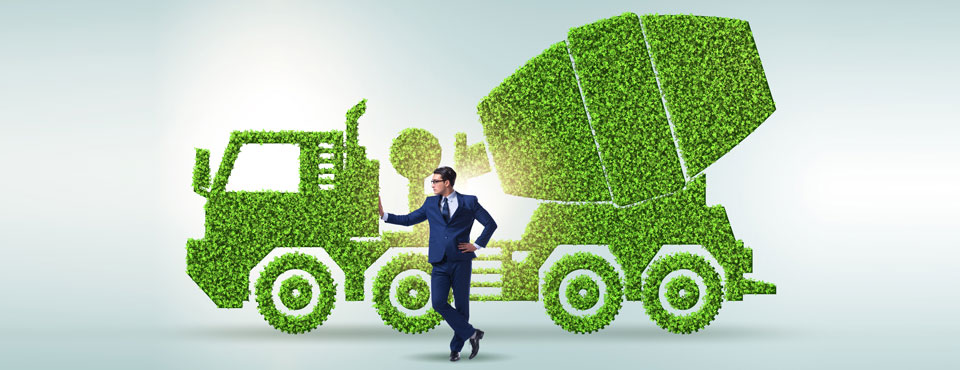

Green cement, also known as sustainable or eco-friendly cement, refers to a type of cement that is produced using environmentally friendly and energy-efficient manufacturing processes, as well as incorporating materials that have a reduced carbon footprint compared to traditional Portland cement.
Portland cement is the most common type of cement used in construction but is known for its significant carbon dioxide (CO2) emissions during production, making it a major contributor to global greenhouse gas emissions.
The primary goal of green cement is to minimize the environmental impact of cement production, which is known to be a significant contributor to carbon dioxide (CO2) emissions.
Some key benefits to green cement are:
Reduced CO2 Emissions: Traditional Portland cement production is a major source of CO2 emissions due to the high-temperature calcination of limestone and the use of fossil fuels. Green cement uses alternative materials, like fly ash, slag, or pozzolans, which can significantly lower the carbon footprint of cement production.
Energy Efficiency: Green cement production processes are designed to be more energy-efficient. For example, some methods use lower-temperature kilns or utilize waste heat recovery systems, reducing energy consumption and associated emissions.
Waste Utilization: Many green cement formulations incorporate industrial byproducts such as fly ash, slag, or silica fume. This not only reduces waste disposal but also conserves natural resources by replacing some of the clinker (a key component in traditional cement) with these materials.
Lower Water Usage: Some green cement technologies require less water during the manufacturing process, contributing to water conservation efforts.
Durability: Green cement often exhibits enhanced durability and resistance to chemical corrosion, which can lead to longer-lasting concrete structures. This reduces the need for maintenance and replacement, further lowering environmental impacts.
Improved Indoor Air Quality: Certain green cement formulations emit fewer volatile organic compounds (VOCs) and have lower alkali content, which can improve indoor air quality in buildings.
Regulatory Compliance: As environmental regulations become stricter, the use of green cement can help construction projects meet sustainability and emission reduction targets.
Market Demand: There is a growing demand for sustainable building materials among environmentally conscious consumers and businesses, making green cement an attractive option for construction projects aiming to demonstrate their commitment to sustainability.
Research and Innovation: Ongoing research and development in the field of green cement are leading to the discovery of new materials and processes that can further reduce environmental impacts.
There are different types of green cement, such as geopolymer cement and calcium sulfoaluminate cement, each with its own unique set of environmental benefits and applications. The choice of green cement depends on the specific requirements and goals of a construction project.
The green cement market in India is estimated to witness robust growth in 2023, owing to significant growth in the building, construction, and infrastructure industry which in turn propels the demand for green cement as a result of high emissions from Portland cement.
Some of the leading players in the Indian Green Cement Market are JSW Cement Limited, Navrattan Green Cement Industries Pvt. Ltd., Kiran Global Chems Ltd., Dalmia Cement (Bharat) Limited, Nuvoco Vistas Corp Ltd., Heidelberg Cement India Limited, ACC Ltd., UltraTech Cement Limited, Shree Cement Ltd., and Anhui Conch Cement CO. Limited., etc.
Comments
Write Comment